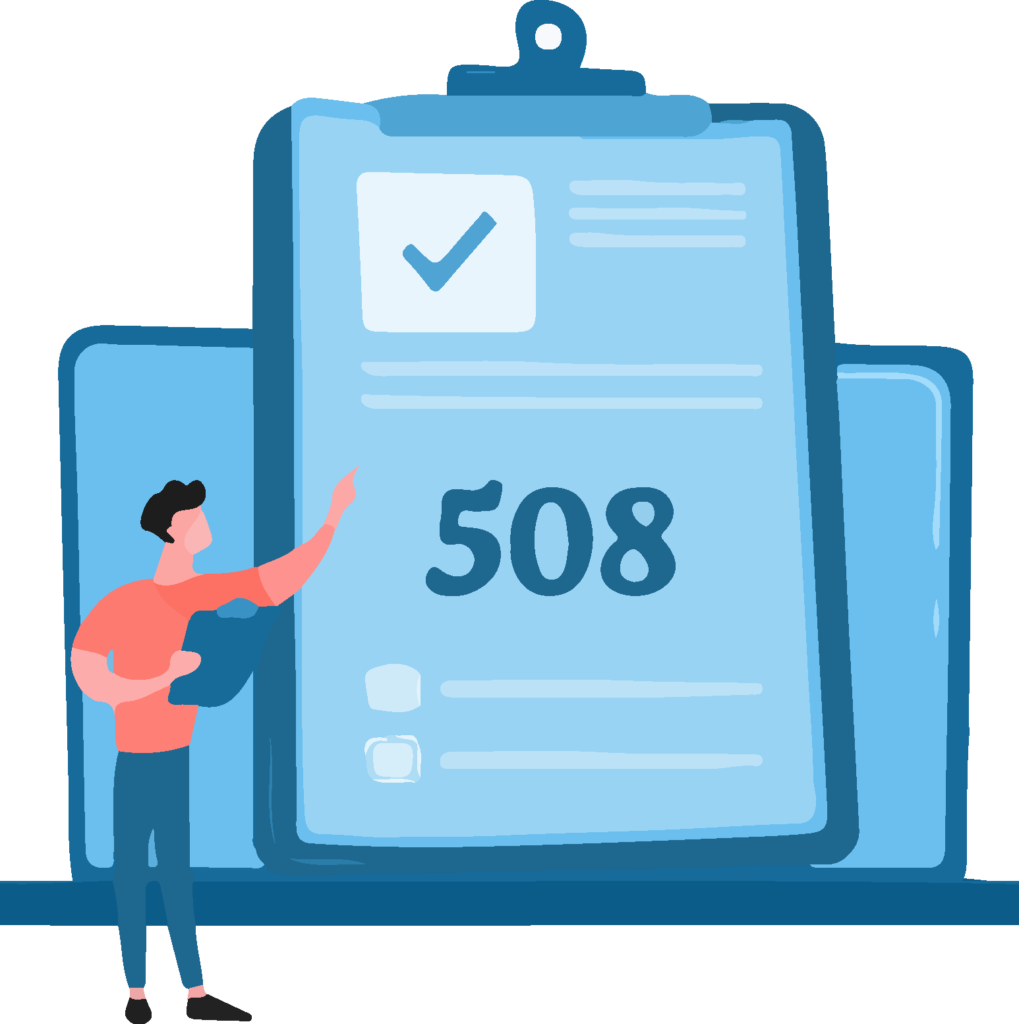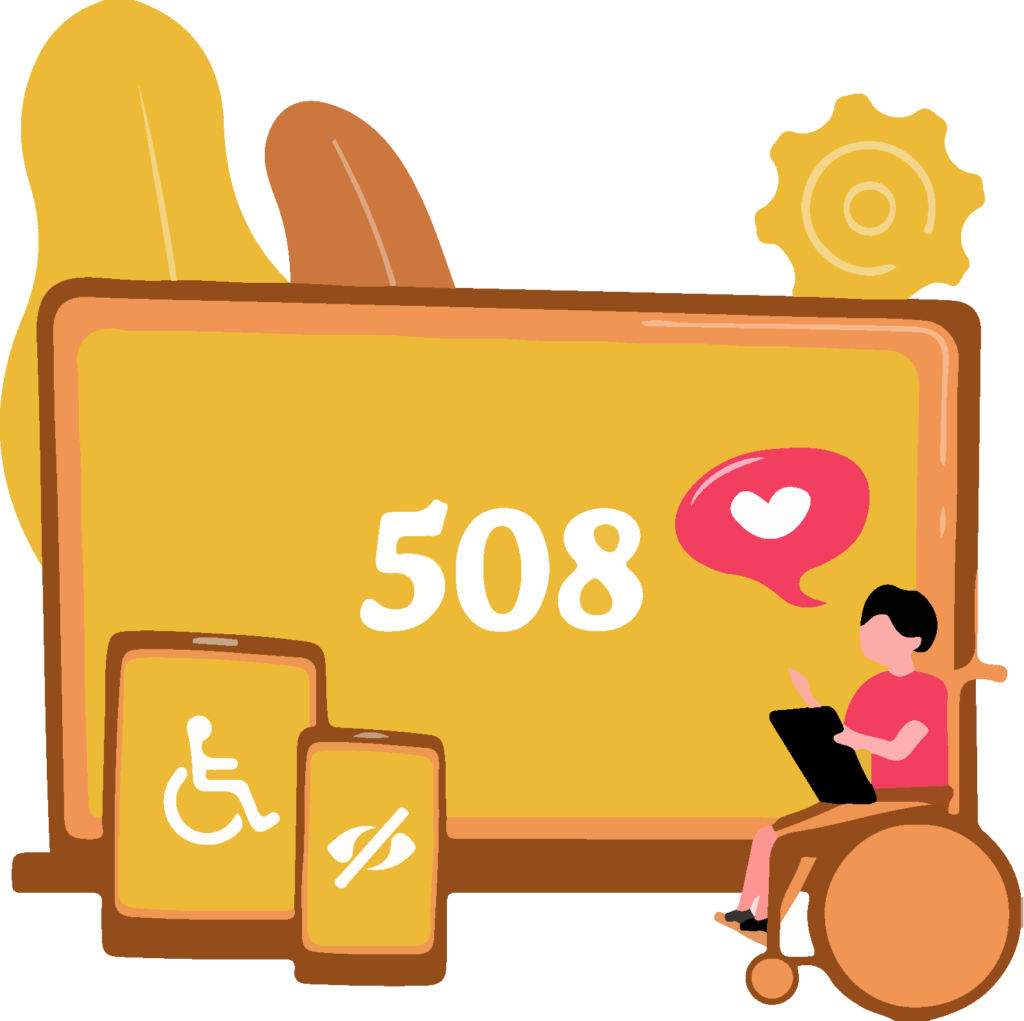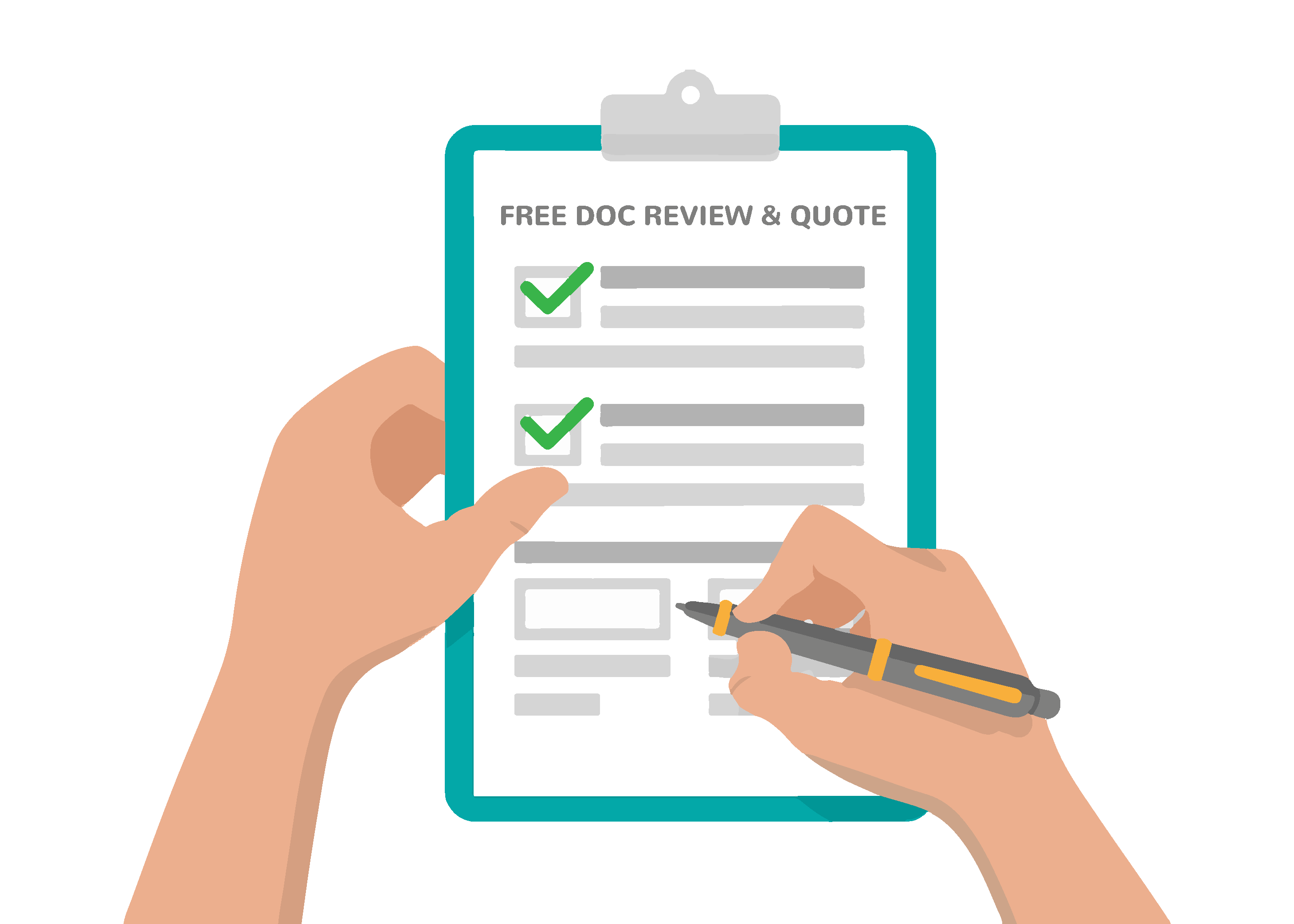If you are searching to understand Section 508 you have come to the right place. Here you will find the answers to:
- What is Section 508 and how does it relate to the Rehabilitation Act?
- What are the 2017 updates to Section 508?
- How to comply with Section 508?
Let’s get started!
What is Section 508?
The Rehabilitation Act of 1973 was signed into law. This was due to the rise of awareness to accommodate the needs of Americans with disabilities. From then until the late 1990s the Rehabilitation Act was reworked and revised. This was to address issues related to technology and accessibility. Section 508 was amended to the Rehabilitation Act in 1998. It requires government content and technology to be accessible to people with disabilities.
In March of 2017, Section 508 was updated to include accessibility requirements for information and communication technology. This was to modernize the requirements of Section 508 which was created 45 years earlier. To bring it up-to-date with the technology and how we use/interact with it in the 21st century.


- All content to the general public is required to be accessible for people with disabilities. This includes those who have visual, hearing, speech, and motor impairments.
- Software and operating systems are required to be compatible with assistive technologies like screen readers, speech recognition, and braille printers.
- WCAG 2.0 level AA conformance is required for federal government websites.
Why does Section 508 matter?
Now that you have a high-level understanding of what Section 508 is, let us examine why it is important for your company or organization. To comply with this important piece of legislation.
Section 508 applies to any company or organization that conducts business with a federal agency. This can range from healthcare providers, legal organizations, or private contractors. Section 508 is crucial to people with disabilities. Without it, they are not able to navigate, comprehend, or access electronic information like digital documents (PDF, PowerPoint, or Word) and websites.


When your company or organization ignores these compliance standards they are open to legal liability. There were over 11,000 lawsuits filed in federal court in 2019, a 4x increase from 2,722 lawsuits from 2013. The first violation can result in a penalty of $55,000 to $75,000 with subsequent violations resulting in a $150,000 fine. This is a headache you want to avoid. As you would take steps to accommodate people with disabilities as an owner of a brick-and-mortar store. So too should digital document and website owners see their spaces online.
The difference between Section 508 and ADA
Web Content Accessibility Guideline (WCAG), Americans with Disabilities Act (ADA), and Section 508 are the compliance regulatory bodies to know for U.S. businesses. WCAG is the gold standard that forms the basis for other compliance standards but what about Section 508 and ADA?
Section 508 is a set of rules laid out for government entities. This is inclusive of any organization that receives federal funding. The ADA is to the entire private sector.


So now what is next?
- Color Contrast and Color Use issues
- Writing Alternative (Alt) Text
- Structuring content by adding Tags
- Manually ensuring the correct Reading Order
- Passing Adobe Accessibility checker, HHS 508 Checklist, and/or PAC3 checker






